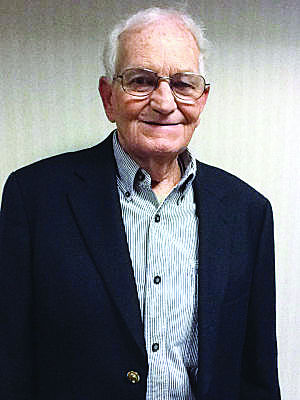“A journey of a thousand miles begins with a single step.”
Lao Tzu, Chinese Philosopher, 6th-5th century BCE – 531 BCE
In recent national surveys conducted by the Substance Abuse and Mental Health Services Administration, and the National Institute on Drug Abuse, the abuse and addiction of alcohol and illicit chemical substances has remained relatively unchanged in our nation; remaining at about 10 percent of the population; and estimated 22.7 million Americans have problems relative to alcohol and other drug substances, yet only about 2.5 million people received treatment for their problems.
Despite the ever increasing availability of treatment services, both in-patient and out-patient, the numbers of those taking advantage of the services has remained relatively stable over the years, with a possible exception being the increased population of individuals engaged in “12 Step programs,” such as Alcoholics Anonymous. Alcoholics Anonymous (AA) began as a conversation between two men, Bill Wilson and Dr. Bob Smith, in Akron, Ohio; to help alcoholics “stay sober and help other alcoholics achieve sobriety,” in 1935.
It grew as a movement of recovery which now encompasses groups all over our globe; and other programs of recovery began to pattern after AA, which now number about 35; beginning with Narcotics Anonymous (NA), then to Overeaters Anonymous (OA), Cocaine Anonymous (CA), Gamblers Anonymous (GA), etc ; and even helping those afflicted with Mental Illness, such as Emotions Anonymous (EA).
Family and friends began to come together to learn how to help themselves and each other in light of their loved ones, or friends addictions, and formed self help groups of their own; beginning with Alanon Family groups, which also began to branch out to the formation of other groups. Millions of individuals and families have since benefited greatly from these movements.
These programs, these “12 Step Programs,” place emphasis on 12 steps of recovery, with the first step being “the admission that one is powerless over alcohol;” or other chemical substances or conditions.
This first step begins the real journey of recovery.
We whom have been involved in the Addiction treatment of individuals and families for many, many years, can attest to the fact that one’s chances for successful recovery are enhanced when they begin in-patient treatment offering therapies and education concerning their individual addictions, and then progress to a structured out-patient treatment program of counseling; and attend meetings of AA, or another 12-step program.
They work adjunctively in tandem. We are also most aware that there are some individuals who have never been in structured treatment for their addiction, who have began and have maintained recovery solely through self-help groups such as AA.
As I have reported to you in articles in the past few weeks, our nation is suffering from the crisis of Opioid abuse and addiction at this time; particularly at a crisis level in the Northeast of the United States. Most alarming are the deaths from overdose on these substances. In order to assist with this problem, new and innovative programs have been put into place.
One such program in New Hampshire, a state that has suffered considerable losses in its war against Opioid addiction, is the Aware Recovery Care program. This program began treating patients within the past two years, and reports that 72 percent of the clients in the program are sober, or still in treatment, after one year. The programs approach is centered around year-long, home-based treatment, allowing patients to recover in a familiar environment while connecting them with medical professionals and medication-assisted treatment — as well as additional support from therapists, case managers and 12-step meetings….it is a program of Recovery.
Although the program is relatively new, so far it appears to offer promise and hope to those addicted to Opioids and other substances. Hopefully this type of program will spread to other states and communities within our nation, as another innovative treatment program for individuals and families affected by all types of the addictions.
In our Valley communities we are most fortunate to have a number of addiction treatment options; such as that offered by Tropical Texas Behavioral Health, the Palms Treatment Facility, etc. They also have placed emphasis on Recovery, and utilize the most contemporary approaches of best practices therapies.
Although the dire need for treatment services is most vital, the emphasis really needs to be placed on Recovery. This year of 2017 has been designated the “Year of Recovery.” In this newspaper, in the Community section, are listed the Alcoholics Anonymous and other self-help group meetings taking place within our Harlingen community. The AA groups are “programs of attraction,” and open meetings are taking place daily and in evenings throughout our community.
As the principles of AA state, “There are no dues or fees; the only requirement for membership is a desire to stop drinking.” AA groups are self sustained through their own membership and do not take monies or other contributions from outside sources. I strongly encourage you whom want to learn about AA, or are in need of them or Alanon, to attend a meeting. It will surely be your first step on the journey of recovery. Until Next Time, Stay Healthy My Friends!





